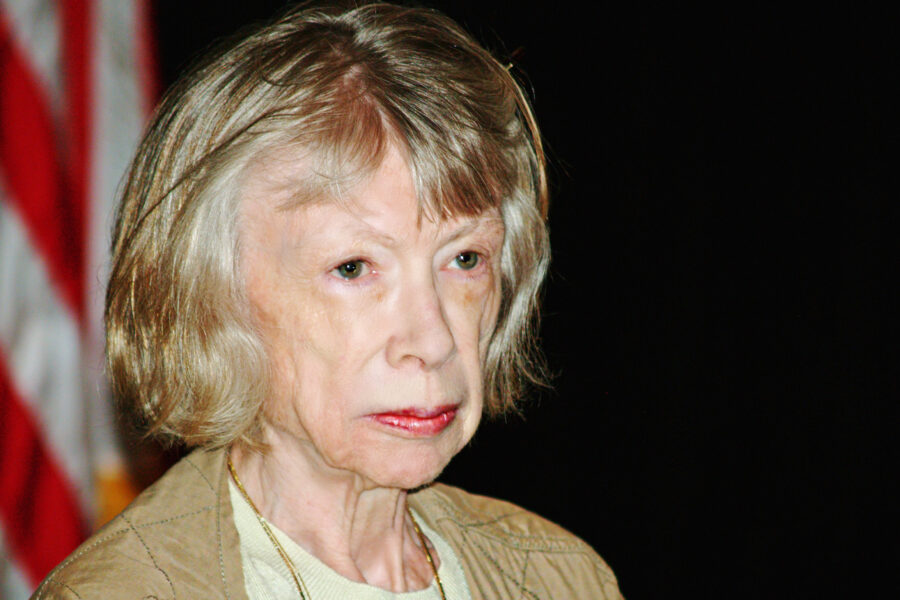Joan Didion, the American literary icon who was renowned for her coverage of US counterculture in the 1960s and 70s, died on Thursday of Parkinson’s disease. She was 87.
Shelley Wagner, her editor at the publishing company Knopf, said, “We will mourn her death but celebrate her life, knowing that her work will inspire generations of readers and writers to come.”
The Pulitzer Prize-winning author was born in December 1934 in Sacramento, California. She studied at the University of California, Berkeley.
Didion joined Vogue magazine in 1956 after she won a writing contest that was sponsored by the publication.
In the introduction to a Vogue interview with Didion, journalist Georgina Howell referred to her as the “master of personal essay” who was equally adept at reporting, having published pieces that ranged from a collection on 20th-century politics in the United States, including Bill Clinton’s impeachment, to an elaborate study of the connections between Florida’s sun-drenched metropolis and the communist regime in Cuba.
The same interview includes a description from Didion of herself as “so physically small, so temperamentally unobtrusive and so neurotically inarticulate that people tend to forget that my presence runs counter to their best interests. And it always does. That is one last thing to remember: writers are always selling somebody out.”
Widely appreciated for her English prose, Didion was inspired by the writings of Ernest Hemingway and Henry James, among others. However, she considered writing to be a hostile act in that “you’re trying to make somebody see something the way you see it, trying to impose your idea, your picture.”
Her work ranges from fiction to non-fiction – all defined by their lengths as much as their language. Her pieces were often long and elaborate and included a couple of book-length essays.
Her first work of fiction was Run, River (1963), that was followed by Play It As It Lays (1970), Democracy (1984), and The Last Thing He Wanted (1996).
Her work in non-fiction primarily consists of collections of essays and her memoirs, The Year of Magical Thinking (2005) and Blue Nights (2011).
The Year of Magical Thinking, which won her the National Book Award for Nonfiction and the French literary award Prix Medicis Essais, is a heart-rending chronicle of Didion’s grief following the death of husband John Gregory Dunne, even as her daughter was hospitalised with pneumonia. Her daughter died within two years of Dunne’s death, before the publication of the memoir. Didion’s second memoir Blue Nights is an exploration into her experiences in the aftermath of her daughter’s death.
Recommended
In one of her most celebrated works of all time, Didion provided a counter-narrative to the media coverage of the 1989 Central Park Five rape case. Titled Sentimental Journeys, the 1991 essay highlighted the wrongful conviction of the Black and Hispanic youth who were apprehended on charges of sexually assaulting a white woman. While the mainstream media in New York glorified the survivor, Didion threw a spotlight on the social and economic conditions of the accused. She focused on how the story changed in its telling through the media, as Howell mentions in her Vogue interview.
Didion also wrote screenplays for films like The Panic in Needle Park (1971), Play It As It Lays (1972), and A Star Is Born (1976), among others.
Didion’s last published work was the essay collection Let Me Tell You What I Mean, which was released in 2021. In it, she wrote, “I wanted not a window on the world but the world itself.”



